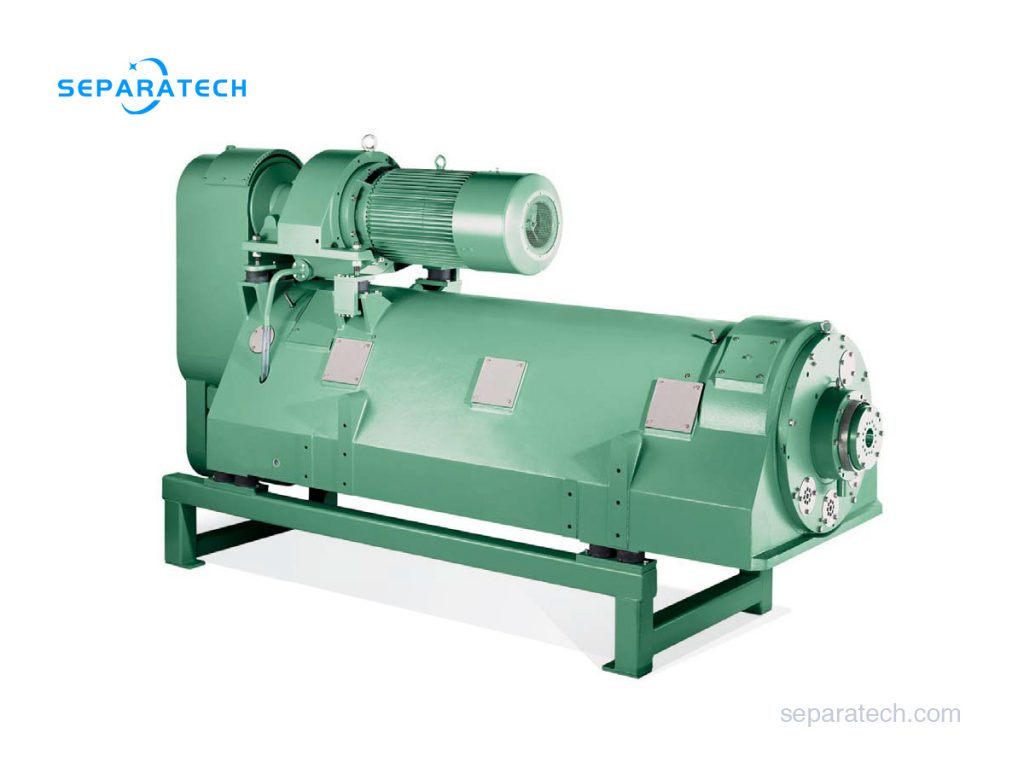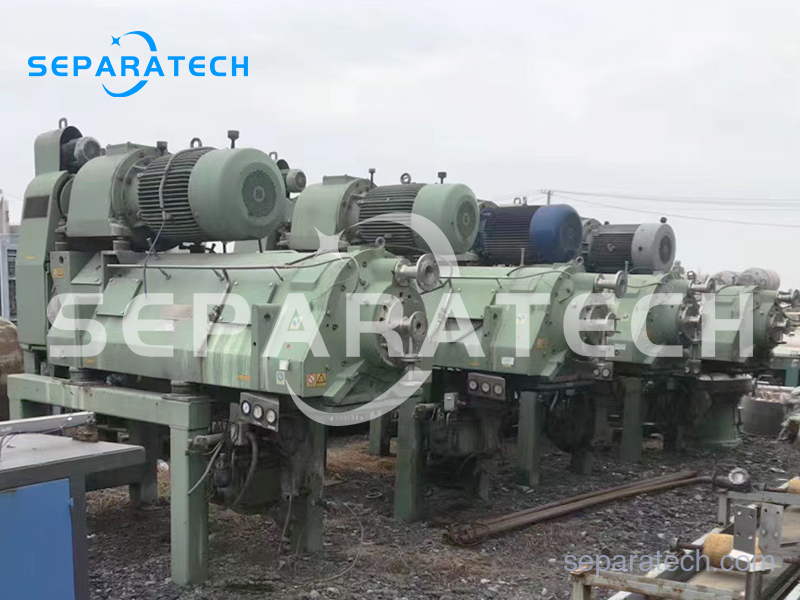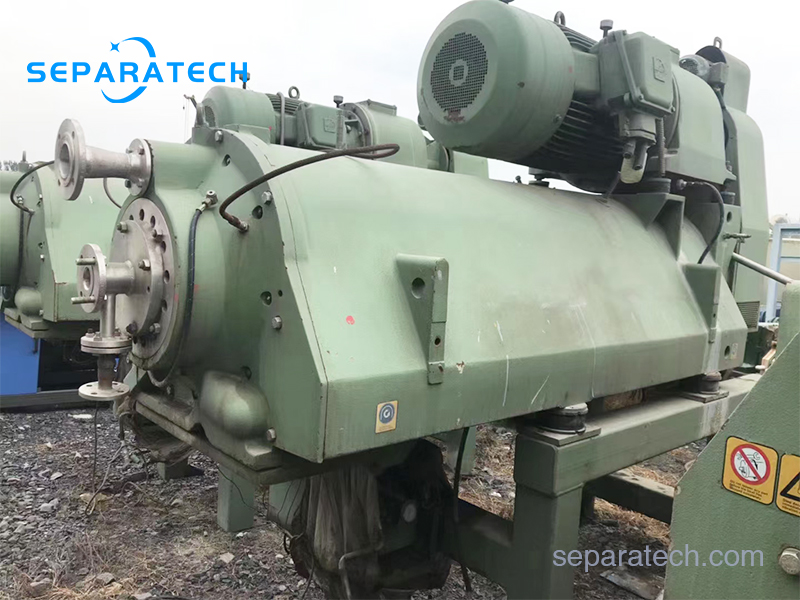Used GEA Westfalia Decanter Centrifuge CA505-01-12

Decanter Centrifuge CA505-01-12 Technical specifications
Max. bowl speed: 3500 rpm
Bowl inert diameter: 510 mm
L : D = 4.0
Max. sediment density: 2.0 Kg/dm3
Half cone angle : 10°
Primary motor: 90 Kw
Min. feeding temperature: 5℃
Max. feeding temperature: 80℃
Manufacturing year: 1995
Working principle of Decanter Centrifuge CA505-01-12
The clarified liquid is discharged under pressure by a centripetal pump. The solids are discharged by gravity via a funnel.The product connections are designed according to DIN 11851. The machine is driven by a frequency-controlled 3-phase AC motor via V-belts. A 2-gear drive is installed for automatic torque measurement and differential speed control.
Twin-motor drive
This is an alternative to the hydrostatic scroll drive. The adjustment of the differential speed is conducted by a torque-dependent, infinitely variable control system employing frequency converters.
Applications
This decanter has been designed for the food and beverage industry. The machine is completely CIP-compatible.
The decanter was developed for high clarifying performance and the highest possible degree of drying of the solids. The most important conditions for this include a high bowl speed and an extremely high screw torque in conjunction with a control system to synchronise the differential speed to the load of the solids.
The processed material enters the decanter through the inlet pipe and is conveyed by the spreader into the separating chamber. It is accelerated here to the operating speed. The solid particles are quickly deposited on the bowl wall due to the centrifugal force.
The bowl has a cylindrical, conical shape. In the cylindrical section, this shape allows effective clarification of the liquid and the solids are effectively dried in the conical section.
The screw turns slightly faster than the bowl shell and conveys the separated solids continuously to the narrow end of the bowl. Due to the conical shape of the bowl, this lifts the solids from the liquid. When passing the “drying zone” which the liquid does not enter, it sheds the adhering liquid due to the centrifugal force. The solids are then expelled through openings in the end of the bowl into the collecting vessel of the housing. The liquid flows between the screw spirals to the opposite end of the bowl. The lighter particles remaining in the liquid are separated by the centrifugal force when passing through the clarifying zone and are conveyed by the screw together with the solids trapped at the inlet zone to the outlet. The clarified liquid leaves the separation chamber over adjustable regulating plates or is extracted under pressure by scrapers.
Depending on the type of decanter, the drive is provided either by 3-phase motors for starting under load or standard motors with hyrdostatic clutches. 3-phase motors with frequency converters can be employed optionally. This allows the starting current and current peaks during starting to be reduced. A regulated, hydrostatic clutch reduces the starting current. The power is transmitted by belts.


